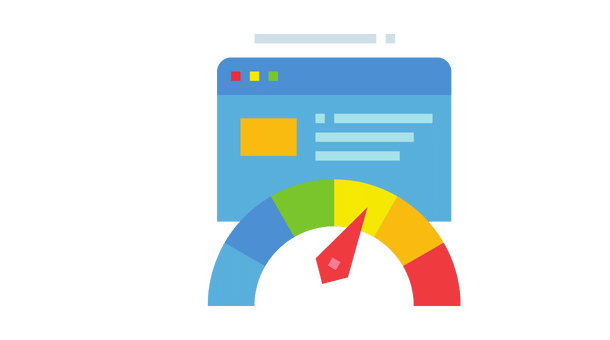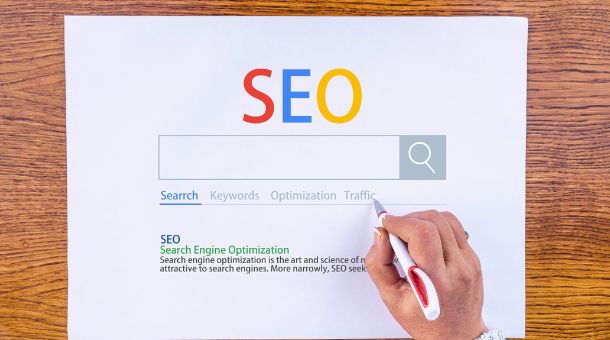In this Article, we will discuss top Google ranking factors that you must not overlook. The majority of SEO professionals complicate the process of getting well-ranked on Google. They worry about every Google ranking factor. (Note that there are about 200 in all! ).
If you don’t have a team of SEO specialists, It is almost impossible to do an excellent job of optimizing every single ranking aspect.
It’s not at all essential. You can reap 80% or more advantages by focussing on the most important 10 metrics with the most impact.
Top 10 Google ranking factors you should not ignore:
1: Backlinks

One of the most effective Google ranking factors to rank higher in Google is to obtain hyperlinks back to your site from other trustworthy sources.
“Backlinks are an important ranking factor that you should be paying attention to in 2021,” says Courtney Zaharia of Online Optimizmism. “Not only do backlinks allow your site to get exposure through the link itself, but they also help boost your site’s domain authority, helping to validate it as a credible source of information.”
Gregory Golinski of Livestorm shares his opinion, “Your competitor websites are optimized to be optimized for SEO today. They are trying to write high-quality articles and address technical SEO issues like you.
The only thing that can be a huge difference and give you an advantage in establishing higher-quality backlinks to your site instead of what they do.
Search Intent If you are focusing on two areas, you should prioritize backlinks and search Engine intent.
Alex Birkett of Conversion.AI Explains, “Look at it, everything boils down to links and Content. There’s no doubt that those categories have a lot of nuances. But it’s the truth. SEOs are trying to complicate the process (which they should do on the edges).
If you have great Content (and it ought to be – create good Content for your customers and then use Clearscope to improve it), Then you must concentrate on linking.
Why? Because it’s more difficult to accomplish and, therefore, is more valuable in a relative sense (what is scarcely available is crucial). If you can figure out ways to generate constant, high-value links every month, you’ll be able to outdo your competition. Don’t underestimate the importance of targeted link-building
2: Content Depth

While searching, the intent is crucial, but you must also ensure that your work shows your expertise and authority on the subject.
Jonathan Aufray of Growth Hackers Services states, “The top-ranking factor is the Content on your site. Creating quality, long-form, and appealing web Content is essential to attract visitors and keep them to your Website.
Many webmasters claim they believe that links are the most important thing. However, no good site will connect to you if you do not have high-quality Content on your Website. So, backlinks are just an additional metric
3: Website Speed

In 2020 was when Google announced an algorithm update focusing specifically on Core Web Vitals.
“Today, site speed is the most critical aspect of usability and user-friendliness,” says Sandeepan Jindal of Bidfortune. “With websites becoming increasingly heavy in terms of time and attention spans shrinking, it’s essential that websites are extremely responsive.
We’ve experienced this firsthand through our product as well with our bounce rate, which fell by 11% when decreasing the loading time of our pages by 7 seconds down to 4.5 seconds. Also, our avg SERP Ranking improved.”
4: Optimized Content

Content optimization is creating and tweaking Content to ensure that it’s useful as well as relevant and searchable.
What is its significance: Because Google wants to provide users with websites that are most relevant to any query, providing Content that covers the information they need to know is a crucial element of getting a high ranking in the search results.
Content that ranks highly must offer real benefit to the user, with engaging visuals and containing keywords relevant to the search query.
5: Technical SEO Ranking Factors

How you Build your site and the code placed (or isn’t) on it will influence how Google “reads” your Content and determines its relevance to searches.
Even even if you’re not an expert “techie,” and the idea of optimizing the web page’s code to increase your SEO rank is daunting, don’t be afraid to take a step. It’s a simple process that can improve your site’s ranking at your fingertips.
6: User Experience

In recent times, Google has been evaluating user behavior to assess how people feel about certain websites. Your site must provide a pleasant user experience to be ranked higher on SERPs.
The part in the Google algorithm that processes data from user experiences to determine results ranking is known as RankBrain. It employs machine learning to provide better results for search by studying signals that show the user’s satisfaction.
7: Links

Inbound, outbound or internal links to your other websites The internet is a vast web of interconnected Content based upon hyperlinks.
Why it is important: Google assesses inbound links from trusted web pages ( backlinks) as a sign of how reliable and authoritative your Website’s Content is. The more reliable websites connect to your Content, the more importance Google assigns to your Website, and the higher your page will rank on SERPs.
8: Social Signals

It’s been for a long time a subject of theories that sharing social media posts could help your site get more traffic. While Google has stated clearly that links from websites like Facebook or Twitter aren’t rank factors, there’s an indirect connection between having an excellent rank and a lot of social share.
9: Real Business Information

If your business has physical stores should think about the local SEO options. Local SEO is about promoting your brand’s image to people searching for you within a specific geographic region. It employs a new range of SEO methods and the other strategies discussed in this Article.
The most important aspect of a good local SEO strategy is providing authentic and genuine information about the business. It is possible to hear this often referred to as NAP abbreviation to mean Name Address and phone number. Sometimes, it is extended to NAP+W with “W” being your Website address.
What is Google an index of the ranking?
A ranking factor is a variable that a search Engine uses to decide the best ordering of relevant, indexed results returned for a search query.
The choice is made between appropriate, indexed pages. A great illustration of this is the frequently absurdly high number that appears below your query whenever you do the Google search, like those 643,3 million ” potatoes“-related pages displayed here:
Most of these sites aren’t especially pertinent, but this is the list of ranking factors wants to sort. Some of the elements that determine the relevance of a page to be included in this list are ranking factors (for instance, those with links that have anchor texts such as “potatoes”), but they’re not the exact identical.
Perhaps the most well-known rank factor in the world is Google’s PageRank, created at a time in which, in proportion, much more internet browsing was performed through clicking links from popular sites.
The function of PageRank was to measure the popularity and, consequently, as a result, the credibility of a Website on the internet.
How are ranking factors combined?
A search Engine could use ranking factors such as Weight and PageRank, add them together, or increase them however it sees as appropriate.
The goal is to blend these factors to produce the best results, for instance, by displaying the results that people will most likely click on at the top of the page. In the CNBC Interview in late 2017 measures, Google could optimize to include the time it takes to interact with SERPsand the rate at which users bounce back to the search results.
Amusingly, perhaps the most interesting information we’ve gotten about the way Google blends ranking factors comes from a query about featured snippets that was asked of Gary Illyes of Google in a conversation with Jason Barnard earlier this year.
I find it humorously because Gary could not provide an in-depth answer to the question. Still, the method he described is fascinating to investigate and further develop – you can read more in Jason’s piece.
Is user experience a ranking factor?
It’s not exactly true. Is it true that “user experience” is not an indicator? However, we know (for example, the CNBC Article mentioned earlier) that many factors Google searches for aligning with a great user experience.
We also know that Google emphasizes things like long loading times or tiny fonts in mobiles as SEO problems and suggests a keen desire to look into this aspect.
There’s a debate going on about whether Google is attempting to quantify this directly (for instance, by taking a look at the click-through rate of particular results in search, and comparing it with what is expected and then adjusting their rankings in real-time) or if they alter their algorithm to search for things that can be linked to improvement in user experience. Some real-world studies suggest the former; however, Google’s official position is that it’s the latter.
How Google works In just 3 steps
Step 1 Crawling
If you type something in the search bar, in the beginning, it will determine what websites are on the internet. Since there isn’t a central database of websites on the internet, it is constantly adding the pages to its database. Certain pages are recognized by Google that have already been visited.
Step 2 Indexing
When a Website is found, Google understands the data of the page. Google examines the contents like images, videos, catalogs, and other information embedded on the Website. This is known as Indexing. The data is stored inside Google’s index. Google index, which is a massive database which is stored in
Step 3 Ranking
When a person searches for something Google, Google will then go through the pages that are indexed to provide the most effective results.
It considers things like location, language, and device, for example. When you search for the same for a restaurant close to me, the results of a search for someone who lives located in India will differ from those for a person within the USA. The results differ.
- It programmatically sorts pages.
- This is the way that Google operates to provide results for its searches after it has gone through a simple but complicated process.
- Questions about top 10 Google ranking factors you should never overlook
- Is domain age a ranking factor?
Google has stated that the age of your domain isn’t an important factor in ranking, and we don’t have any reason to doubt their assertion on this point.
How long you have registered your domain does not matter to Google’s Search Engine. Parts purchased from old registrations will not make you more popular or better.
What is the number 1 ranking factor on Google?
High-Quality Content. You’ve seen numerous instances where “Content is the king”. When it comes to Google rank factors, this is the king.
How to increase your local business’s Google rating:
- Give a great experience to your clients.
- Request each customer to leave an SMS review.
- It’s easy to do in 10 seconds on similar devices.
- Personalize your message, so your customers know why they’re receiving it.
- Be responsive to all reviews, whether it’s good or bad

